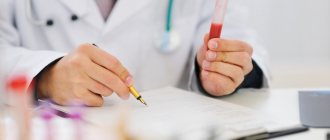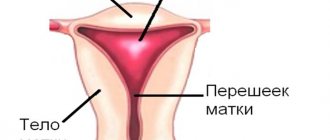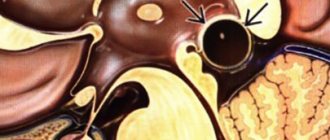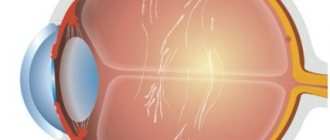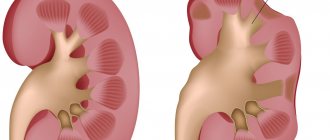Pyelonephritis
Hepatitis
Cystitis
Diabetes
94949 03 August
IMPORTANT!
The information in this section cannot be used for self-diagnosis and self-treatment.
In case of pain or other exacerbation of the disease, diagnostic tests should be prescribed only by the attending physician. To make a diagnosis and properly prescribe treatment, you should contact your doctor. We remind you that independent interpretation of the results is unacceptable; the information below is for reference only.
General urine analysis (with sediment microscopy): indications for use, rules for preparing for the test, interpretation of the results and normal indicators.
Decoding
Physical properties: color, density and transparency must meet the following parameters:
- Color – from light yellow to yellow;
- Density – 1.008 – 1.030 g/l;
- Transparency – transparent or slightly cloudy.
When studying chemical properties, the following are considered normal indicators:
- pH (medium) – acidic (from 5 to 7);
- Protein is contained in small quantities and cannot be determined chemically;
- Urobilin – less than 17 mol/l.
All other indicators must be equal to zero .
Main symptoms
When the level of ketones in the body is high, the patient experiences the following symptoms:
- 1Asthenia, muscle weakness, decreased performance, attention, reaction speed, drowsiness, lethargy.
- 2 Thirst, dry mouth, complete lack of appetite, aversion to food.
- 3 Nausea, repeated vomiting.
- 4Smell of acetone from the mouth (sweat and urine do not always smell of acetone).
- 5 Severe headache, abdominal pain.
- 6 Increased body temperature, dry skin and mucous membranes, bright blush.
- 7 Increased heart rate.
- 8Enlarged liver (temporarily).
Sometimes spontaneous normalization of the level of acetone in the blood occurs, its excretion in the urine ceases, and the patient’s condition improves.
If the severity of symptoms increases (for example, in patients with diabetes, pregnant women), then more menacing signs arise: lethargy, dehydration, toxic damage to the central nervous system, blood acidification (pH shift to the acidic side), disruption of the heart, kidneys, convulsions, coma, death.
Ketoacidosis usually develops suddenly, after exposure to some provoking factor (excess fatty foods, fever, acute stress).
General table of indicators
| Index | Norm | Reasons for the increased content | Reasons for low content or absence |
| Total Density SG | 1.008 – 1.030 g/l | More than 1.030 g/l – with insufficient fluid intake, impaired renal function, edema, acute glomerulonephritis, diabetes mellitus. | 1.010 – 1.011 – with impaired renal function; Less than 1.005 – diabetes insipidus; Less than 1.015 – with diets, large fluid intake, and reduction of edema. |
| Urobilinogen UBG | No more than 17 mol/l; In the old-style forms, the urobilin content is recorded, + – weakly positive, ++ – positive, +++ – strongly positive, which indicates the degree of urobilinuria | Functional liver disorders: hepatitis, intoxication (poisoning with alcohol, chemical compounds, sepsis); cirrhosis, liver failure. | ___ |
| Bilirubin BIL | Not determined | Hepatic and obstructive jaundice | ___ |
| Ketone bodies KET | Not defined | Diabetes types 1 and 2, a strong increase in ketones is observed in coma; Long-term diets, alcohol poisoning, postoperative period | ___ |
| Red blood cells BLD | Not detected | Pyelonephritis and glomerulonephritis in the process of exacerbation, prostatitis, trauma and inflammation in the kidneys and urinary tract, tuberculosis, heart attack, kidney cancer. | No more than 3 in the field of view, which can happen during physical stress |
| Protein PRO | Less than 0.002 g/l | Infections and foci of inflammation in the kidneys and urinary tract, kidney tuberculosis, amyloidosis, bleeding, hypertension, long-term anemia. | ___ |
| Nitrite NIT | Not defined | Infection of the urinary tract by pathogenic bacteria | ___ |
| Leukocytes LEU | Up to 3 for men and up to 5 for women | Kidney diseases in acute and latent phase: pyelonephritis, glomerulonephritis; urinary tract inflammation, amyloidosis and renal tuberculosis | ___ |
| Glucose GLU | Not detected | Kidney diabetes | ___ |
| pH reaction | 5 – 7 | Diabetes mellitus, prolonged fasting, kidney tuberculosis, functional kidney disorders | Cystitis, hematuria, after vomiting and gastric lavage, |
Ketonuria and ketonemia
Ketone bodies provide energy metabolism along with glucose. They are a kind of fuel for myocytes, brain, internal organs (except for the liver, red blood cells) under extreme conditions for the body: hunger, exhaustion, dehydration, intense physical activity.
When the concentration of fatty acid metabolic products in the blood increases (0.5 mmoll or more), this condition is called ketonemia. It occurs when the formation of ketones is significantly higher compared to their utilization.
An excess of the normal concentration of ketone bodies in the urine (more than 0.5-1 mmol/l) is called ketonuria. Acetoacetate and beta-hydroxybutyrate are predominantly excreted in the urine.
Acetone is excreted to a greater extent in exhaled air, and its concentration in urine is the lowest compared to the content of other ketones.
Acetone is a strong poison for cells. A slight excess of the norm provokes the occurrence of pathological symptoms from the respiratory, heart, digestive or nervous systems.
An increase in the amount of urine acetone (acetonuria) is primarily associated with a relative lack of glucose, when the energy demand of cells increases significantly. The result of such fasting is the breakdown of glycogen (glucose reserves), the mobilization of a large amount of fatty acids from the depot.
Interesting! The sweetish smell of acetone on breath appears with ketonemia (more than 10 mg% of acetone in the blood) and ketonuria (detection of ketones in the urine)! Often found in diabetics during decompensation!
Red blood cells BLD
The presence of a large number of red blood cells (blood) in the urine is indicated by a change in its color to red-brown - this condition is called gross hematuria . A small amount of red blood cells can only be determined in the laboratory.
Normally, red blood cells are not detected, perhaps isolated manifestations, no more than 3 in the field of view. The reasons for the content of red blood cells are: infectious and inflammatory diseases of the kidneys and urinary tract, malignant tumors and kidney injuries. Often, traces of blood in the urine of men indicate inflammation of the prostate in the acute stage.
results
The test results will determine the level of glucose, ketones and protein in the urine.
Glucose
Your doctor may suggest adjusting your treatment depending on the results.
If a urine test tests for glucose, the doctor will usually do a blood test for glucose and glycated hemoglobin (HbA1c) levels to determine whether the person has diabetes. In controversial cases, a glucose tolerance test (GTT) may be necessary to detect earlier carbohydrate metabolism disorders and help prevent diabetes.
If a person has high levels of glucose in their urine, it may be due to diabetes. If this is the case, they will also have high blood glucose levels (hyperglycemia).
In the short term, uncontrolled high blood sugar can lead to symptoms such as thirst, increased urination, and an increased risk of developing DKA. In the long term, this can lead to the development of micro- and macrovascular complications of diabetes mellitus - kidney damage, eye damage, the development of cardiovascular diseases - myocardial infarction, stroke.
If a person is diagnosed with type 1 diabetes, they will need insulin to control their blood sugar levels. Type 1 diabetes usually develops in childhood or adolescence, but can occur at any time. It may also appear quickly, within a few weeks.
Type 2 diabetes usually appears later in life and takes years to develop. A diagnosis of prediabetes will allow a person to make lifestyle changes that can slow or reverse the progression of the condition.
The ADA recommends screening for type 2 diabetes at age 45 or earlier if a person has risk factors such as obesity.
Ketones
A person with diabetes who detects ketones in their urine should see a doctor to prevent the problem from getting worse.
If ketone levels are high, they may require treatment in the hospital with insulin medications, electrolytes, and fluids.
Some low-carb diets can cause fat to be broken down and create ketones for fuel. A low-carb diet by itself does not cause ketoacidosis and is different from DKA.
However, a person with diabetes should discuss their diet plan with their doctor and seek advice about any dietary changes they wish to make.
Squirrels
Protein in the urine may be a sign of kidney disease.
A person with diabetes should talk to their doctor if they notice the following symptoms:
- swelling due to fluid retention
- sleep problems
- low appetite
- weakness
- difficulty focusing
People with kidney disease often do not notice any symptoms until later stages, when the kidneys no longer work effectively. This can lead to serious complications.
Your doctor may suggest regular urine protein screening as this can help identify kidney problems early, while there is still time to take preventative measures.
People are at higher risk of kidney disease if they have:
- certain genetic factors
- persistent high blood sugar
- high blood pressure
Addressing high glucose and blood pressure may reduce your risk.
Urobilinogen UBG
Urobilinogen is contained in freshly released urine, and when it stands for a long time, it turns into urobilin, which is present in the body of a healthy person in small doses.
An increased content of urobilin is typical when the liver is damaged, when it loses the ability to excrete it with bile, as well as when the bile duct is blocked (for example, by a stone).
Diagnosis of urobilinuria in medical practice is important for identifying the causes of jaundice and determining liver damage.
Why is ammonia dangerous?
An increase in the level of ammonia in the blood leads to the fact that it begins to penetrate various organs and tissues and, first of all, the brain. Ammonia is lipophilic, so it is easy for the ammonia molecule to penetrate the lipid membranes of brain cells. An increase in ammonia levels and its penetration through the blood-brain barrier is accompanied by various neurological symptoms, including depression of consciousness and the development of coma. In children, hyperammonemia may be accompanied by loss of skills and impairment of neuropsychological development.
Protein PRO
The urine of a healthy person contains less than 0.002 g/l of protein . The content of this element in an amount exceeding the norm is called proteinuria, which is classified into renal and urinary tract proteinuria.
To differentiate proteinuria, additional examination of urine sediment is necessary (according to Nechiporenko, Addis-Kakhovsky). Only with a cumulative analysis of all indicators (erythrocytes, casts, leukocytes) can the cause of the protein content be identified, these are: pathological conditions of the kidneys (pyelonephritis, glomerulonephritis, tuberculosis, amyloidosis and pathological conditions of other organs: anemia, hypertension, heart failure.
Protein can be detected in small quantities if the patient consumed protein foods or performed heavy physical exercise the day before the test. If traces of protein are detected in the urine, the patient is prescribed a repeat test.
What do ketone bodies in urine mean?
The interpretation of the analysis result depends on the method of its implementation. What do traces of ketone bodies in urine mean? Only a doctor can tell you a specific diagnosis. In home tests, after adding urine, the indicator zone will acquire a color that gives an approximate result. The test shows ketone concentrations from 0 to 15 mmol/L, but you won’t see exact numbers. If you find a purple tint on the test strip, the situation is critical. If, when adding drops of ammonia, the urine turns bright red, then there are ketones.
Total Density SG
The SG in healthy people can range from 1.010 to 1.025 . Deviations from the norm in a single study cannot have a decisive clinical significance. Detailed tests are required aimed at daily determination of density and its fluctuations: Reiselman, Zimnitsky, dry eating, water tests.
An increased RPL of urine is observed in cases of dehydration, diabetes mellitus, and edema that occurs due to pathologies of the heart and kidneys.
Low OPl - with excessive drinking, decreased swelling, long-term fasting, kidney failure, diabetes insipidus.
How to remove acetone from urine
For acetonuria, you should try to reduce the increased acetone in the urine. How? It is necessary to maintain a proper daily routine and eat healthy foods. With very high numbers, only hospitalization of the patient is indicated. The doctor prescribes treatment, drinking plenty of fluids, and a strict diet. You need to drink 1 tsp of water. every 15 minutes. If an adult or child cannot do this due to vomiting, then intravenous fluid drips are prescribed to prevent dehydration. Products and medications that can help include:
- decoction of raisins and other dried fruits;
- solutions of drugs Orsol and Regidron;
- chamomile infusion;
- still alkaline water;
- Cerucal injections;
- absorbents Sorbex or White coal;
- cleansing enema (1 tablespoon of salt per 1 liter of water).
Diet for ketonuria
In addition to taking medications, the patient’s weakened body needs a proper diet, which contributes to treatment and a speedy recovery. The correct diet for acetone in urine, suitable for your body, is prescribed only by your doctor. How to reduce ketone body levels? General treatment recommendations include a diet that includes:
- lean meat;
- porridge;
- fermented milk products;
- compotes, green tea, homemade lemonade;
- vegetables;
- walnuts and hazelnuts;
- vegetable soup and borscht.
When are Zimnitsky tests prescribed?
The Zimnitsky analysis is prescribed to study kidney functionality.
The diagnostic factors of this method are: the density of urine and changes in its numerical indicators in different portions, and diuresis - the ratio between the amount of fluid consumed and excreted in 24 hours.
Normal indicators:
- The difference in urine density between the highest and lowest values is not less than 0.012;
- Daytime diuresis is twice as prevalent as nighttime diuresis;
- The daily amount of urine is not less than 65% and not more than 85% of the fluid consumed;
- The allowed minimum density of urine is 1.005, the maximum is 1.030.
Deviations indicate kidney disease: pyelonephritis and glomerulonephritis .

